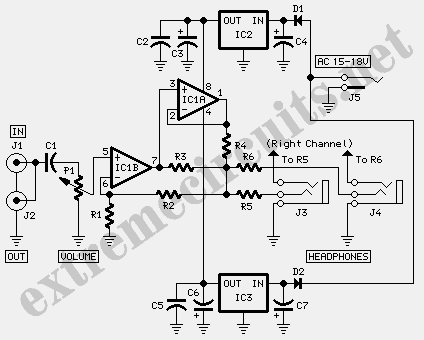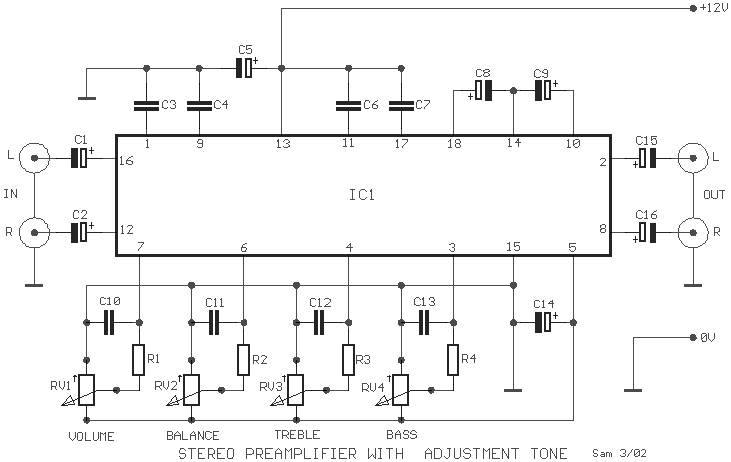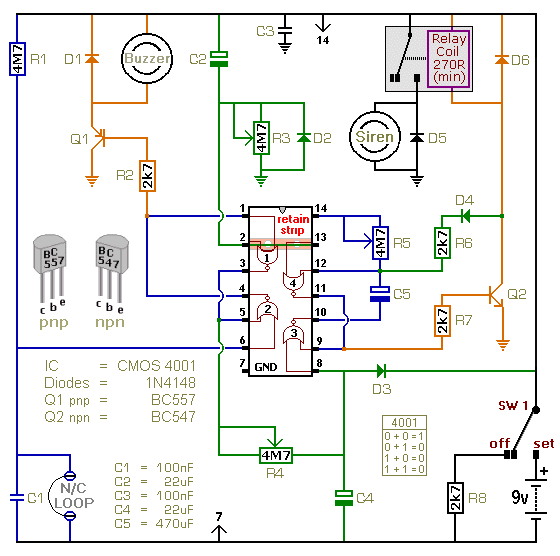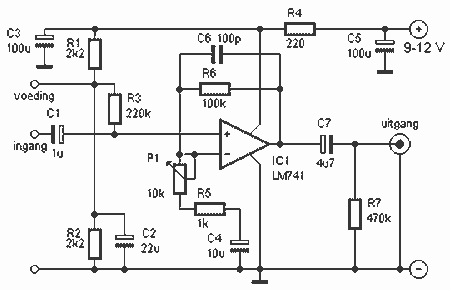
Anti-theft Alarm Of Motorcycle One
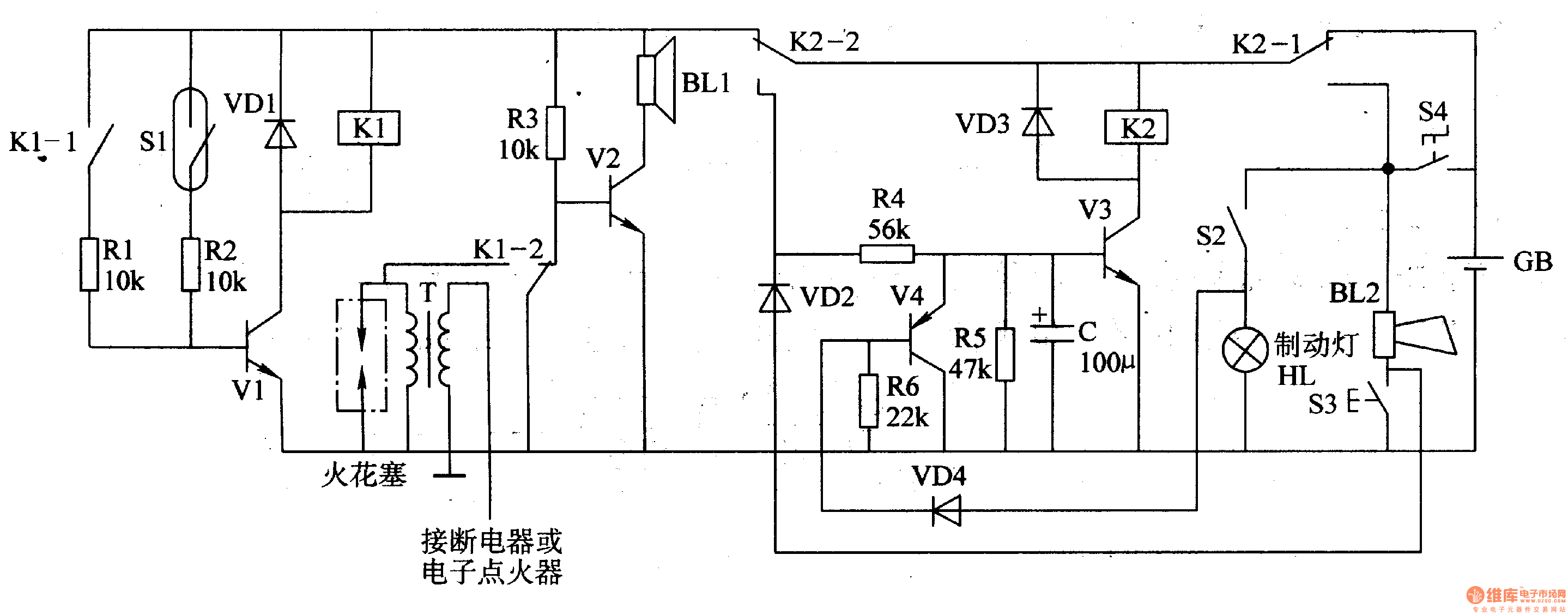
The circuit comprises a trigger circuit, an alarm control circuit, and a reset circuit for the alarm. The trigger circuit includes mercury switches (S1), a resistor, transistors (V1), and a relay (K1). The alarm control circuit is made up of relay contacts (K1, K1-1, K1-2), a transistor (V2), and resistors (R3 and R1), along with an alarm.
The circuit operates by utilizing a trigger mechanism to detect specific conditions, such as movement or changes in environmental parameters. The mercury switches (S1) function as the primary sensing elements; when the switch is tilted or moved, it closes the circuit, allowing current to flow. This action activates transistor (V1), which in turn energizes relay (K1). The relay serves as a switching device that can control higher power loads, such as an alarm system.
The alarm control circuit is responsible for processing the signal from the trigger circuit. Relay contacts (K1, K1-1, K1-2) are utilized to manage the flow of current to the alarm system. The transistor (V2) amplifies the signal received from the relay, ensuring that the alarm is activated with sufficient power. Resistors (R3 and R1) are employed to limit the current through the circuit and to set the biasing conditions for the transistors.
Finally, the reset circuit allows the system to be deactivated after the alarm has been triggered. This is essential for preventing false alarms and enabling the system to be reused. The overall design ensures that the circuit is both reliable and efficient, providing a robust solution for alarm applications. Proper component selection and configuration are crucial for achieving the desired performance and responsiveness of the circuit.Work of the circuit The circuit consists of trigger circuit, alarm control circuit and the reset the alarm circuit. (It is showed in picture 7-84.) Trigger circuit consists of Mercury switches Sl, resistor cell, transistors Vl and relay Kl.
Alarm control circuit consists of the relay contacts Kl Kl-l, Kl-2, transistor V2, resistors R3 and Rl and alar.. 🔗 External reference
The circuit operates by utilizing a trigger mechanism to detect specific conditions, such as movement or changes in environmental parameters. The mercury switches (S1) function as the primary sensing elements; when the switch is tilted or moved, it closes the circuit, allowing current to flow. This action activates transistor (V1), which in turn energizes relay (K1). The relay serves as a switching device that can control higher power loads, such as an alarm system.
The alarm control circuit is responsible for processing the signal from the trigger circuit. Relay contacts (K1, K1-1, K1-2) are utilized to manage the flow of current to the alarm system. The transistor (V2) amplifies the signal received from the relay, ensuring that the alarm is activated with sufficient power. Resistors (R3 and R1) are employed to limit the current through the circuit and to set the biasing conditions for the transistors.
Finally, the reset circuit allows the system to be deactivated after the alarm has been triggered. This is essential for preventing false alarms and enabling the system to be reused. The overall design ensures that the circuit is both reliable and efficient, providing a robust solution for alarm applications. Proper component selection and configuration are crucial for achieving the desired performance and responsiveness of the circuit.Work of the circuit The circuit consists of trigger circuit, alarm control circuit and the reset the alarm circuit. (It is showed in picture 7-84.) Trigger circuit consists of Mercury switches Sl, resistor cell, transistors Vl and relay Kl.
Alarm control circuit consists of the relay contacts Kl Kl-l, Kl-2, transistor V2, resistors R3 and Rl and alar.. 🔗 External reference
